In the expansive fields of eastern Colorado, no-tiller Scott Ravenkamp is fighting a silent war against fallow.
Field by field, Scott and his uncle Lyle are doing their best to debunk myths and “rules” that have become entrenched with many farmers in the semi-arid western U.S.
While winter wheat-summer fallow systems tend to dominate the region, the Ravenkamps have eliminated fallow seasons on their 6,500-acre farm near Hugo, Colo., and introduced a “full-flex rotation” that includes cover crops and small grains other than winter wheat.
They’re also beginning to wean their farm ground off commercial fertilizers by replacing it with compost, as well as seeding cover crops and native grasses, and dabbling in mob grazing. They’re determined never to go back to chemical fallow.
“We lose more moisture than we actually use with fallow. I’m absolutely convinced of it,” Scott says. “Digging through the research, I think we conserve 50% of moisture with fallow, if we’re lucky, and maybe only 25%. And some farmers wonder why their fields turn to baked bricks. It’s horrible for the soil to not have anything growing on it.”
Goodbye To Fallow
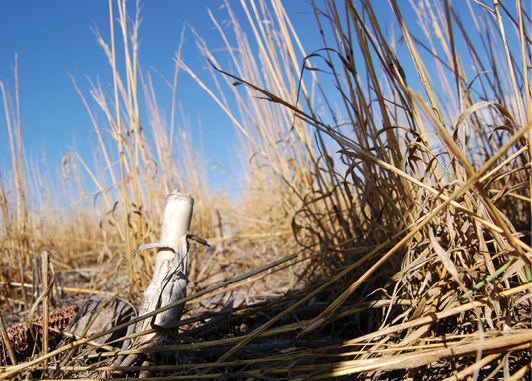
Ravenkamp Farms spans parts of two counties in eastern Colorado and sits at an elevation of 5,400 to 5,800 feet. Annual rainfall is only 12 to 14 inches and they mostly farm sandy loam and silt loam soils.
The Ravenkamps began to reduce tillage operations on their farm in the late 1990s, around the same time they decided to phase out chemical fallow and pursue continuous cropping. One-third to half of their acres were fallowed at the time, and they began seeding summer crops, eliminating fallow in just a few years.
“I wish I could tell you it was for soil-health reasons, but it was money,” Scott says. “We needed more acres for additional family to come back and farm. When we looked at our cash flow, summer fallow was our biggest expense with the chemicals, land payments, machinery, and time all factored in.”
They started their conservation-tillage program by strip-tilling corn and sunflowers with a home-built machine equipped with Yetter row units. The narrow strip was less than 5 inches wide and 4 to 6 inches deep. Rather than a rolling basket, the machine had rubber press wheels to break up clods and pack the seed row.
Instead of using a ripper, they relied on the sunflowers’ deep taproots to rip their ground. They kept the strips narrow and shallow to conserve moisture.
While there was some success with strip-till, the results became unsatisfactory when the cost of labor and the machinery were factored in, Scott says. He also began to notice one spring that seedling emergence and stands were no better for crops planted into the strips when compared to where their planter missed the strips.
Once diesel-fuel prices in their area went above $4 per gallon one spring, it convinced the family to switch to no-till.
“We had it in our mind we couldn’t get a planter to work in no-till because the ground would be too hard,” Scott says. “The lack of residue was our issue, as well as learning how to get the planter to work.”
No-Till Flexibility
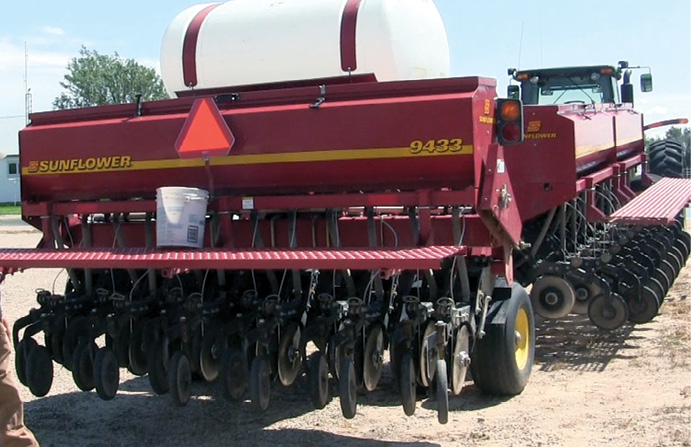
The Ravenkamps typically have a rotation of winter wheat, dryland corn, sunflowers and proso millet, with corn being the most profitable grain crop and proso millet being the most consistent.
But with problems caused by recent droughts and a desire to build more residue and soil cover to improve soil health, the Ravenkamps are now diversifying their rotations by making field-by-field cropping decisions in what they call a “full-flex rotation.”
Their decisions are usually based on residue levels left over from the previous crop, weed pressure or whether enough rain or snow fell to supply adequate moisture. When they have moisture, there’s a chance to consider more crops and the ability to plant at higher populations.
Last year, the Ravenkamps split their acres into 20% corn, 25% red or white proso millet and 25% winter wheat, cereal rye and triticale — what Scott calls “winter cereals.” The rest of the acreage was devoted to 10% each of sunflowers and white and black oats, 7% milo and 3% cover crops harvested for seed.
The wheat, cereal rye, and triticale were harvested in July and August, followed by proso millet, sunflowers, corn and milo. Yields for the summer crops were way below average, but yields for proso millet, sunflowers, milo and corn were about average. A 3-week drought in August hurt yield potential.
When compared to wheat, Scott believes cereal rye and triticale are much tougher plants — especially cereal rye, which his father frequently seeded during the 1960s when wheat stands were blown out by high winds.
The Ravenkamps also want to get established in the cover-crop seed market, feeling that there won’t be many farmers in the Midwest willing to give up cash crops to do it. The cereal rye they’re growing is mostly being sold into the cover-crop market and feedlots have expressed interest as well.
Scott was able to harvest some cereal rye, oats and barley last year for seed, along with peas, safflower, rapeseed and flax that was sold for feed.
Their winter wheat went to Denver-area flour mills, sunflowers to a crusher for oil, proso millet and milo for the birdseed market, and corn was sold to feedlots or farmers needing feed.
They expect this year’s rotation to be similar, possibly with slightly higher acreage for milo and sunflowers and a little less for corn. They don’t like to get too heavy on any one crop because it limits their options in the following year’s rotations.
“Four or 5 years ago, I could have told you in June what a field would go to the next year,” Scott says. “Last spring, we were making decisions in the tractor as we were going along, based on what amount of rain had fallen and what the weed situation looked like.
“With corn, for example, the residue situation dictates where I plant it. We’re trying to get to a certain number of acres on corn, but I won’t sacrifice a field to do it.
“Most of our moisture comes between April and August. If you think about the wheat crop, you have 2 months after harvest where you have nothing growing in a wheat-fallow system. You might argue that I can use the stored moisture when planting, but it doesn’t make sense when you’re only saving about half the moisture in fallowed fields.
“I’d rather utilize that moisture right there in those months, instead of saving it, and try to use it.”
Another reason for diversifying the rotation is logistics. Expanding acreage with all continuous winter wheat would have made it very difficult to harvest efficiently, but they figured that by adding millet, corn and sunflowers, the labor could be spread out.
No-Till Tools
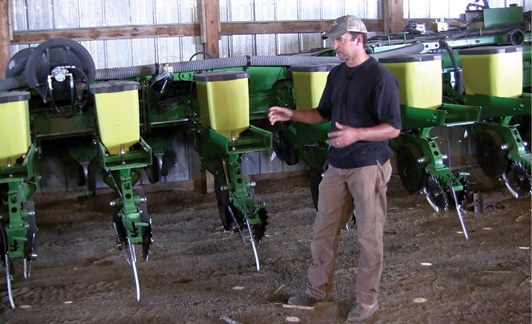
The Ravenkamps plant sunflowers in 30-inch rows at a population of 20,000 seeds per acre, with 10-34-0 applied at planting. They shoot for yields of 1,200 pounds per acre.
Corn is planted in 30-inch rows along with 10-34-0 starter fertilizer at 12,000 seeds per acre. Their dryland corn yields have occasionally eclipsed 100 bushels per acre.
Winter wheat is usually drilled with a Sunflower double-disc drill and topdressed with 28% on occasion.
Preserving residue from broadleaf crops, small grains and cover crops is serious business at Ravenkamp Farms — not just in terms of cropping choices, but in the equipment they’re using:
• Their corn, sunflowers and milo are planted with a 24-row John Deere 1770NT planter set to 30-inch spacings and featuring Precision Planting plates, pneumatic down pressure and Pro-Series drive XP row units to eliminate chains that sometimes get plugged with corn stalks when sunflowers are being planted.
The machine has no row cleaners, but does have Thompson closing wheels, Keeton seed firmers to improve seed-to-soil contact and apply starter fertilizer, and a seed tube guard from RK products. Additionally, RK Products gauge-wheel kits keep the gauge wheels up tight against the opening discs.
“This is important when you’re running into heavy wheat residue when planting corn. This way you don’t pinch stubble between the gauge wheel and discs,” Scott says.
Perhaps the biggest modification was inserting a narrow gauge wheel off a John Deere air seeder to make the row-unit path 3 inches narrower than the standard unit.
“If you can take 3 inches off the unit width on 30-inch spacings, you can save about 10% more residue — which doesn’t sound like much until you do the math,” Scott says. “We’ve decided that several hundred acres of residue is allowed to be left standing by putting the narrow gauge wheels on.”
• The Ravenkamps seed cereal crops, oats, proso millet and cover crops with their 9433 Sunflower drill set to 10-inch spacings. They modified the fertilizer tank so fertilizer can be streamed in-furrow at seeding. There’s been talk of going to a single-disc drill or air seeder on the farm, “but this unit has really never failed us, so we just keep running it,” Scott says.
• The family abandoned standard platform headers with augers and uses a Shelbourne Reynolds stripper header to harvest cereals, oats and proso millet. The header leaves as much residue standing as possible to catch snow and protect seedlings.
The only modification they’ve made is installing auto-height control on the header.
“With some of the short crops we’ve been raising during droughts, you can’t see how high the header is until it hits the ground,” Scott says. “I don’t have any facts to back this up, but I think the stripper stubble being there is worth 5 to 10 extra bushels of corn. Some other guys out here are running them. Once they made the decision, they haven’t looked back.”
Faith In Compost
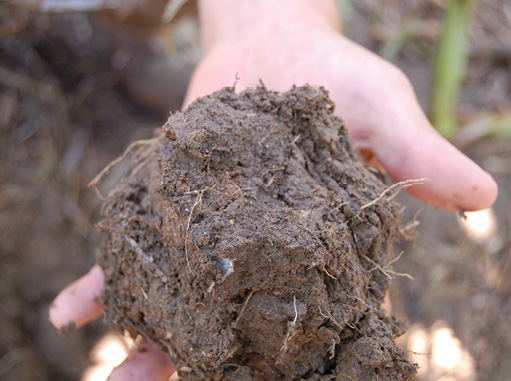
For the past decade or more, the Ravenkamps have typically had every field soil tested annually. They apply 60% to 65% of the recommended rate for nitrogen, phosphorus, sulfur and zinc.
Fertilizer blends, such as 10-34-0, are applied on the soil surface at planting for corn, proso millet and sunflowers, and placed in-furrow for small grains. Occasional passes are made with a sprayer to topdress nitrogen.
But Ravenkamp is embarking on a major change to the way crops will be fertilized. Beginning last fall, he’s begun having composted fertilizer — basically feedlot manure that has been windrowed and turned — hauled in from Humalfa at Ft. Morgan, Colo.
Nothing is added to the composted fertilizer, which is applied at a rate of 1 ton per acre with a truck spreader with spinners. The Ravenkamps had compost applied on about 2,500 acres last fall, focusing on fields with crop stubble, and they will complete application during the winter months.
Scott plans to skip some farm ground he rents and other fields he recently acquired because he still feels the soils are bacteria dominated and won’t utilize the compost nutrients properly.
The cost per acre for the compost is comparable to commercial nitrogen and phosphorus, Scott says, but they’re getting additional benefits of sulfur and zinc at levels they couldn’t afford to apply separately with commercial products.
“They have test results on the compost, so they know what an average ton consists of. We have a good idea on our needs for crops, and it matched up pretty well,” Scott says, noting that one of his farm’s biggest problems is with phosphorus deficiency. “We’re hoping that in a couple of years, we can skip fertilizer with some crops like proso millet, which has a lower fertility requirement.
“It may be a little more expensive to go the compost route, especially with the drop in commercial fertilizer prices,” he adds. “We applied a small amount of starter fertilizer with the cereal rye and triticale and eventually hope to wean our soils off commercial fertilizer.”
The Ravenkamps believe going to the compost system will also speed up planting and seeding operations because they won’t be pumping 10,000 to 15,000 gallons of fertilizer a day through their planter and drill.
Scott also believes the compost will improve soil health on the family’s farm and help them move away with some commercial fertilizers with high levels of salt, which Scott says he’s tired of cleaning from his tanks and equipment.
“In 2012, it was so dry that as we were going out into corn stalks and streaming on fertilizer, we could see every band from the year before where the ground was white,” Scott says. “White soil is bad soil. If I can see it a year later, there’s no way anything in the soil survived in that little band.
“There have been wars where people put salt on farmland to sterilize it, and here we are today hauling it to the fields to use as fertilizer,” Scott says.
Ignoring Naysayers
In some parts of the western U.S. where moisture is limited, talk of cover crops makes some no-tillers nervous.
The often-cited fear is that there may not be enough moisture for cover crops to germinate or the vegetation could steal away valuable moisture in the spring or summer ahead of planting.
But the Ravenkamps haven’t let this stop them from incorporating covers into their operation, as they’ve drawn inspiration from successes shared by the likes of North Dakota no-tiller Gabe Brown and NRCS agronomist Ray Archuleta.
Last August, they seeded a 10-way mix of cover crops into wheat and cereal-rye stubble that included common vetch, winter peas, non-GMO soybeans, oats, pearl millet, sorghum-sudangrass, Ethiopian cabbage, flax, sunflower and safflower on fields that had low levels of wheat or cereal-rye residue.
The Ravenkamps are also dabbling with what they consider “native” rangeland mixes. Last September, they seeded yellow sweet clover (1.5 pounds), alfalfa (2 pounds), rapeseed (1 pound), buckwheat (4 pounds) and cereal rye (30 pounds), taking advantage of a 6-inch rain in September.
“I’m just trying to get more cover out there — just speed the soil biological process up, especially with the cereal rye, which is a hardy plant. If I can grow that and then get clover and alfalfa to survive, that will add diversity to our pastures,” Scott says.
Ravenkamp says September 18 was a little too late, noting that this illustrates why no-tillers integrating covers into dryland farms must have plans in place.
“We should have broadcasted cereal rye into the corn and other crops when it was dry in August because then we got those 6 inches of rain. In October, it would have been sprouted,” Scott says.
Since adding cereal rye and other cover crops to their rotation, earthworms and beneficial ants are returning, even in their sandy soils.
And they’re beginning to see other things happen in their soils that they can’t explain: Black-oat residue covered with fungus that doesn’t appear on the white oats; and in a field taken out of CRP several years ago, mushrooms growing in the soil with maggot-like insects crawling all over them.
Even assumptions about water use are being disproved, Scott says. In one field in 2012 where cover crops were drilled, they noticed several months later that the headlands were very bare — aside from some rapeseed plants that had survived.
“The only winter wheat that was alive was under the rapeseed plant, which goes against everything I’ve been told about cover crops using too much moisture,” Scott says.
In another field, the Ravenkamps drilled cereal rye on Nov. 9, 2012, after corn harvest, hoping to replace residue lost to high winds. Despite getting only about 0.1 inch of moisture for the next 3 months, enough cereal rye emerged last year to be harvested at 10 to 15 bushels per acre.
“We can’t explain it, but we’re going to keep doing it,” Scott says. “Our plan is to have more residue above and belowground. Yes, cover crops will use some moisture, no doubt about it. But everybody talks about germinating and growing a cover crop, and the equation doesn’t end with that.
“If you grow more cover, you will save more of every drop of water you get after that. And whatever crop comes out after the cover will use less water. You’ve got to look at the bigger picture. We don’t need 14-foot-tall stuff growing, but having cereal rye growing under corn leaves is better than nothing.”
Pleasing The Masses
Another facet of no-tilling the Ravenkamps want to revive is mob grazing with cover crops, since he is giving up a cash crop to add them to his rotation.
But that will take some adjustment, because there isn’t enough forage from his rotation. He’s seeded oats and both spring and summer cover-crop mixes in “native” rangeland and they all emerged, but didn’t get big enough for forage.
Water sourcing is another obstacle that he’ll have to solve, especially with the large expanses he farms.
“We have two options: grow something that would let us graze or go to bale grazing by locking the cattle into a tighter area. We would feed them in spots so I have traffic in one area where they leave residue, manure and urine, then move them to a different spot.
“If we could grow something in our pastures and not have to bale and haul it, we would try it.”
What is considered native rangeland today often cannot stand up to grazing for 4 or 5 months out of the year, Scott adds. Deciding how much vegetation ought to be removed by the cattle is also key, with the rule often being take half, leave half.
“We’re having to replace a cash crop. If we can get livestock back in the fields, there will be benefits to having them out there,” Scott says. “But we need to be careful on how we do it. If the fields become all bare, it’s defeating the purpose.
Related Content
Transitioning to No-Till, Cover Crops in the ‘Dust Bowl’
Learn how Nick Vos pushes to overcome moisture challenges on his farm in southwestern Kansas by no-tilling and using covers to recycle available nutrients and keep his sandy soils protected.

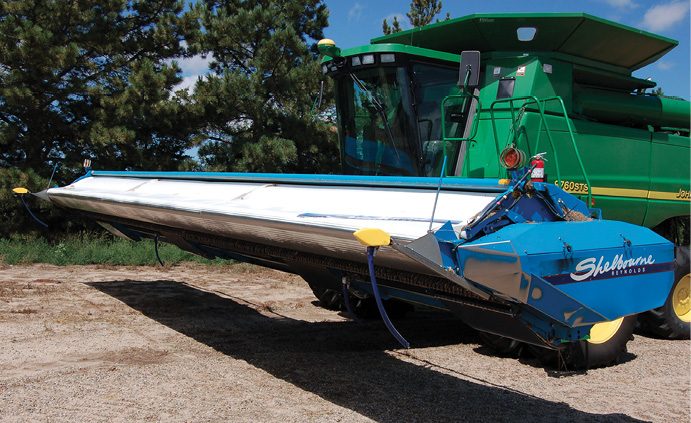




Post a comment
Report Abusive Comment